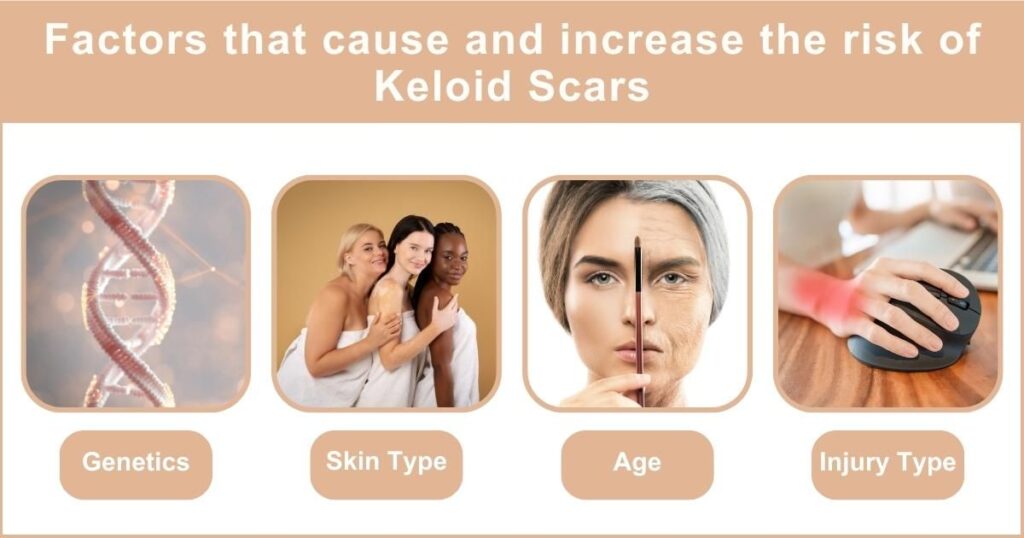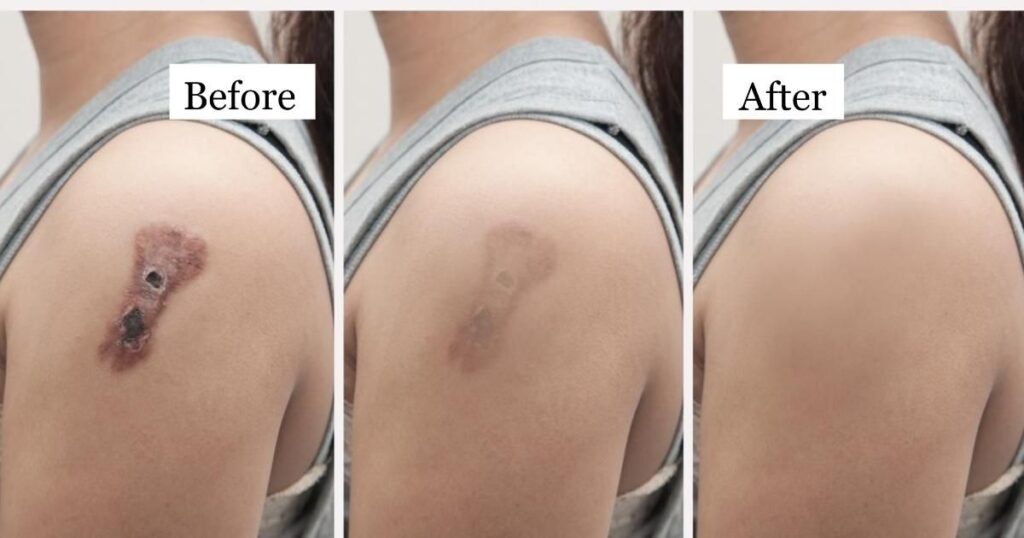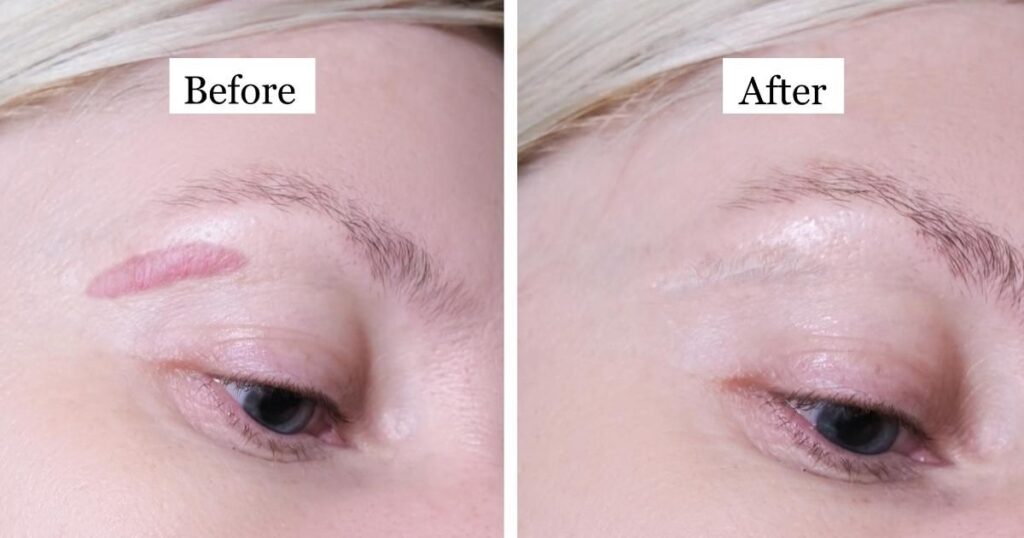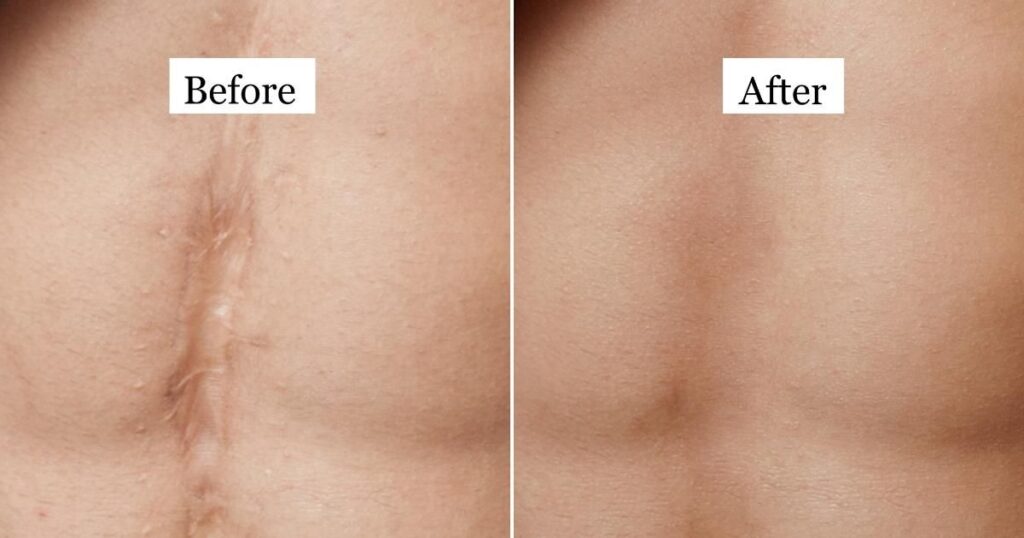Life is often about second chances, and for those burdened with keloid scars, the opportunity for a fresh start is more than a mere aspiration—it’s a tangible possibility. These overgrown, thickened scars can be more than unsightly; they can be a daily reminder of past injuries, surgeries, or traumas.
They might even impede movement or cause physical discomfort. But with keloid scar revision surgery, a door opens to a new beginning. It’s not just about altering appearances but transforming lives, restoring self-confidence, and providing a renewed outlook.
This article delves into the transformative potential of keloid scar revision surgery, offering essential insights for those seeking to embrace this life-changing second chance. Whether dealing with the physical constraints or emotional burdens of keloid scars, the journey to healing and self-renewal is within reach.
How Can Keloid Scar Revision Surgery Offer a Second Chance?
Keloid scars can be more than just a cosmetic concern; they often represent a physical and emotional burden that reminds individuals of past injuries or surgical procedures. However, with advances in medical science, keloid scar revision surgery offers a second chance to those burdened by these prominent scars.
Book A Consultation With Dr Shehzadi Tasneem
Top-rated Plastic Surgeon For Keloid in Dubai
Installment Plan Available
Dubai’S Keloid Management is a special way doctors in dubai treat skin bumps called keloids. they use different methods to make the skin smooth and healthy again.
Patients can reclaim their self-confidence and appearance by embracing the opportunity for revision. This surgery doesn’t just repair the skin – it provides a fresh start and a renewed outlook on life.
Factors that cause and increase the risk of Keloid Scars

Understanding the root causes and risk factors can help in preventative care.
- Genetics : A family history of keloid scars makes you more susceptible.
- Skin Type : Darker skin types have shown an increased propensity for keloid formation.
- Age Factor: Keloids are more commonly found among the younger population.
- Injury Type : Not just traumatic injuries, even minor skin abrasions from piercings, acne, or chickenpox can lead to keloids.
Why Keloid Scars May Be Problematic or Unsightly for Some Individuals
Keloid scars are more than a mere aesthetic issue for many people. They can present several challenges:
- Discomfort and Itching: Keloid scars are raised and thick, leading to discomfort and persistent itching. This physical irritation can affect daily life and well-being.
- Aesthetic Concerns: The puckered and sometimes discoloured appearance of keloids can be visually unappealing. These scars may be a constant reminder of past trauma or surgery.
- Impact on Self-Esteem: Particularly if the scar is in a visible location, it can significantly impact one’s self-esteem. Feelings of self-consciousness and embarrassment may arise, affecting social interactions and overall confidence.
Traditionally Based Treatments for Keloids
Before diving into the new, it’s essential to understand the old – how people have tried to cope with and treat keloids. Here’s a look at some traditionally based treatment options :
- Corticosteroid Injections: These were commonly used to soften and flatten the keloid scars. They were injected directly into the tissue to reduce inflammation.
- Pressure Therapy: Applying continuous pressure on the scar using special garments or bandages was a conventional method to flatten the keloids over time.
- Cryotherapy: This involves freezing the keloid scar with liquid nitrogen. It was used to reduce the hardness and size of the scar tissue.
- Laser Therapy: Certain lasers were used to diminish redness and improve the scar’s appearance, although not necessarily reducing size.
- Silicone Gel Sheets: These were applied to the affected area to hydrate the skin and to promote a flattened and softer appearance of the keloid.
- Surgical Removal: Though a risky approach, as it could potentially lead to the formation of a new keloid, surgical excision was sometimes used in conjunction with other treatments to remove the scar.
- Radiation Therapy: In some cases, low-dose superficial radiation was employed post-surgically to reduce the likelihood of keloid reformation.
Reason Why People Need Second Chances For Keloid Scar Surgery

Keloid scars can be particularly challenging to treat, and sometimes, initial attempts at treatment may not produce the desired results. Here are the reasons why individuals might seek second chances for keloid scar surgery:
- Unsatisfactory Results: The initial treatment might not have reduced the appearance of the keloid as hoped, leaving individuals unsatisfied with the outcomes.
- Reformation of Keloid: Sometimes, the keloid may reform after initial surgery, potentially even larger or more prominent than before.
- Advancements in Technology: New and more effective treatments may become available after the initial treatment, offering better results and less invasive procedures.
- Emotional Impact: Living with a prominent keloid scar can have significant emotional and psychological impacts. A second chance at treatment may provide hope and improve self-esteem.
- Physical Discomfort: Keloids may cause itching, pain, or restricted movement if located near a joint. Further treatment may alleviate these physical symptoms.
- Professional Consultation: A consultation with a different medical professional or specialist might reveal alternative treatment options that were not previously considered.
- Financial Considerations: The availability of new funding or insurance coverage may make a second chance at treatment financially feasible.
- Personal Readiness: An individual may not have been emotionally or physically ready for the commitment required for keloid treatment initially but may feel prepared later.
Benefits And Potential Risks For People Considering Second Chances For Keloid Scar Surgery

Below is a table summarising the benefits and potential risks for people considering second chances for keloid scar surgery. This concise comparison can help individuals make an informed decision.
| Benefits | Potential Risks |
| Improved appearance of the keloid | Possibility of keloid reformation after surgery |
| Alleviation of physical discomfort (itching, pain, etc.) | Potential surgical complications (infection, bleeding, etc.) |
| Enhanced self-esteem and confidence | Emotional stress from potentially unsatisfactory results |
| Access to newer, more effective treatment options | The financial burden of additional treatment |
| Potential resolution of restricted movement near joints | Extended recovery time and the need for additional care |
| Opportunity to consult with different medical professionals | Risk of allergic reactions or side effects from medications |
| Better alignment with personal readiness and commitment | The potential emotional toll from repeated procedures |
Candidates for Surgery
While it might seem like a one-size-fits-all solution, it isn’t. The procedure is best suited for:
- Individuals with Prominent Keloid Scars : Especially those that cause discomfort or are located in aesthetically sensitive areas.
- Those Dissatisfied with Previous Treatments: Ideal for individuals who have tried other methods without success or satisfactory results.
- Patients with Good Overall Health: A strong immune system and general good health can contribute to successful healing post-surgery.
- Individuals Who Are Non-Smokers: Smoking can interfere with wound healing and increase the risk of complications.
- Patients Committed to Post-Surgery Care: Adherence to care instructions can influence the outcome and minimise the chance of keloid recurrence.
Pre-operative Considerations:
Preparation is half the battle won. ” Cryotherapy in Scar Elimination: A Synopsis ” is a summary of how using extreme cold (cryotherapy) can help get rid of scars. It explains how this cool treatment can make scars less noticeable.
” Avoiding Keloid Scars: Swift Suggestions for Clear Skin ” is a helpful guide that teaches you how to prevent bumpy scars and keep your skin smooth and clear. It’s like a roadmap to healthier skin! Ancient Keloid Scars Removal is a method used long ago to get rid of thick, puffy scars. It helped people have smoother and clearer skin.
Removing facial keloids means getting rid of thick, raised scars on your face to make your skin look smoother and feel better. Keloid scar removal Dubai expense can be high but many clinics offer affordable options for treatment
Nose piercing scar treatment helps to make the skin look better after a nose piercing by using creams or other methods to reduce the scar Keloid Scar Pain Management means using treatments like creams or small injections to help reduce pain and swelling in keloid scars
Keloid Scar Treatment: Renewing Skin helps make your skin look better by treating big scars that grow too much Ear keloid treatment helps remove extra scar tissue that grows on ears after an injury or piercing Doctors can use special creams surgery or other methods to make ear keloids smaller or go away
Excessive scar formation happens when the body makes too much new skin while healing a wound This can lead to raised thick or bumpy scars that look different from normal skin Scar reduction strategies help make scars less noticeable
Budget-friendly scar solutions can help improve the appearance of scars without spending a lot of money You can try natural remedies like aloe vera or coconut oil for Nearby laser scar clinics offer treatments to help reduce the appearance of scars
Lip keloid remedies include using silicone sheets and applying special creams to help reduce the scar tissue Massaging the area and using pressure therapy are also common
- Medical Evaluation: Understanding individual health and history.
- Treatment Planning: Laying out the strategy.
- Expectations Setting : Knowing the potential results and risks.
Postoperative Care and Recovery

After keloid scar revision surgery, the postoperative phase becomes crucial. It plays a vital role in ensuring proper scar healing and achieving the desired aesthetic outcome. This phase demands careful attention, adherence to specific guidelines, and an understanding of possible complications. Here’s a detailed breakdown:
- Wound Care : Proper surgical area cleaning and dressing.
- Medication Compliance: All prescribed medicines, such as antibiotics, are taken to prevent infection.
- Activity Restrictions : Avoid strenuous activities that may strain the affected area.
- Follow-up Appointments : Regular check-ins with the surgeon to monitor healing.
Recovery Stages:
| Stage | Duration | Key Considerations |
| Immediate Recovery | First 24 hours | Ensure rest, pain management, and immediate complications are monitored. |
| Short-term Recovery | 1-2 weeks | Continuation of wound care and gradual reintroduction of normal daily activities. |
| Mid-term Recovery | 3-4 weeks | Monitoring of scar appearance, careful sun protection, and resumption of regular tasks. |
| Long-term Recovery | 2-3 months | Observation for any signs of keloid recurrence, follow-up as needed with a surgeon. |
Keloid scar revision surgery goes beyond being a mere procedure; it offers a transformative experience. By highlighting the concept of “second chances,” we emphasise how medical advancements like revision surgery pave the way for improving aesthetics and reigniting personal confidence.
For those struggling with prominent keloids, this becomes an unmistakable invitation to consider this viable option. After all, everyone deserves the opportunity to feel comfortable and confident in their skin. If this resonates with you, don’t hesitate to seek the guidance of a skilled professional.
Dr Shehzadi possesses exceptional skills as a surgeon specialising in keloid scar revision surgery. Through her unwavering dedication to excellence and extensive expertise, which includes a Fellowship in Craniofacial Surgery and significant experience in both aesthetic and reconstructive procedures, she seamlessly combines artistry with precision in every surgical intervention. Reach out now and book a free consultation ; a new beginning awaits you.












